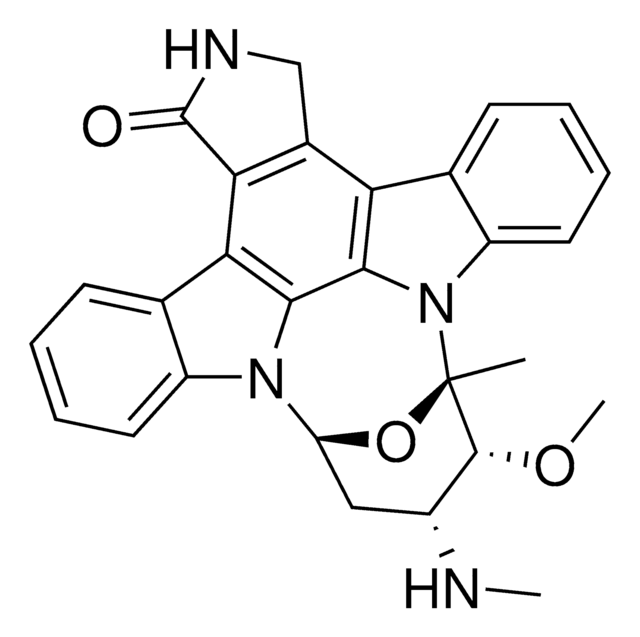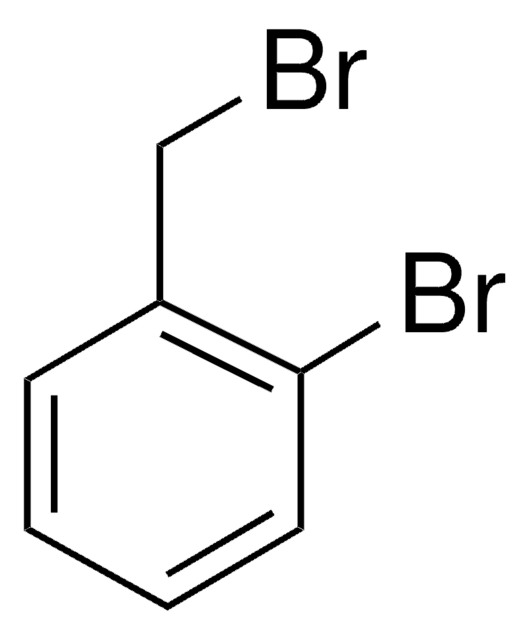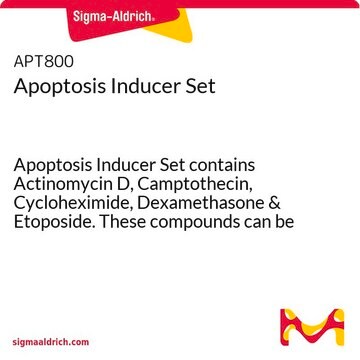19-123-M
Staurosporine
Staurosporine Streptomyces is a potent, cell-permeable, reversible, ATP-competitive and broad spectrum inhibitor of protein kinases.
Synonym(s):
PKC inhibitor, protein kinase C inhibitor
Sign Into View Organizational & Contract Pricing
All Photos(1)
About This Item
UNSPSC Code:
12352200
eCl@ss:
32160405
NACRES:
NA.41
Recommended Products
General description
Suitable for use as a potent inhibitor of PKC and other protein kinases in vitro and in cultured cells.
Application
Staurosporine has been used as a protein kinase inhibitor to study the ubiquitin-protein ligase E3 component N-recognin 5 (UBR5)-mediated CDC73 regulation at the protein level. Staurosporine has been used to induce apoptosis in CHO-K1 cell lines, followed by cell imaging and extraction of cell lysate for further analysis.
Biochem/physiol Actions
Staurosporine, a broad-spectrum protein kinase inhibitor, belongs to the indolocarbazole family. It is referred to as a prototypical ATP-competitive kinase inhibitor. Staurosporine is effective against various kinds of cancers. It is commonly used for inducing apoptosis in different types of cells.
Quality
Routinely evaluated by Protein Kinase Inhibition Assay
Legal Information
UPSTATE is a registered trademark of Merck KGaA, Darmstadt, Germany
Signal Word
Warning
Hazard Statements
Precautionary Statements
Hazard Classifications
Aquatic Chronic 4 - Repr. 2
Storage Class Code
11 - Combustible Solids
WGK
WGK 3
Flash Point(F)
Not applicable
Flash Point(C)
Not applicable
Certificates of Analysis (COA)
Search for Certificates of Analysis (COA) by entering the products Lot/Batch Number. Lot and Batch Numbers can be found on a product’s label following the words ‘Lot’ or ‘Batch’.
Already Own This Product?
Find documentation for the products that you have recently purchased in the Document Library.
Customers Also Viewed
Boyang Chen et al.
Bioelectrochemistry (Amsterdam, Netherlands), 153, 108456-108456 (2023-05-30)
Lower yields and poorer quality of biopharmaceutical products result from cell death in bioreactors. Such cell death is commonly associated with programmed cell death or apoptosis. During apoptosis, caspases are activated and cause a cascade of events that eventually lead
Carl D Bortner et al.
Methods in enzymology, 428, 161-181 (2007-09-19)
The loss of cell volume or cell shrinkage, termed apoptotic volume decrease (AVD), is a classical characteristic of apoptosis. Microscopy, Coulter electronic sizing, and/or flow cytometry has traditionally been the means to measure this characteristic of apoptosis. Although electronic cell
Joachim Rudolph et al.
The Enzymes, 34 Pt. B, 157-180 (2013-01-01)
The p21-activated kinases (PAKs) are Ser/Thr kinases in the STE20 kinase family with important roles in regulating cytoskeletal organization, cell migration, and signaling. The PAK enzyme family comprises six members subdivided into two groups: Group I, represented by PAK1, 2
Yasuko Nakajima et al.
Methods in enzymology, 484, 613-630 (2010-11-03)
Electrophysiological experiments in our laboratory have led to the discovery that the cholinergic neurons in the nucleus basalis in the rat forebrain possess constitutively active inward rectifier K(+) channels. Unlike cloned inward rectifier K(+) channels, these constitutively active inward rectifier
Staurosporine: a prototype of a novel class of inhibitors of tumor cell invasion?
C A O'Brian et al.
Journal of the National Cancer Institute, 82(22), 1734-1735 (1990-11-21)
Our team of scientists has experience in all areas of research including Life Science, Material Science, Chemical Synthesis, Chromatography, Analytical and many others.
Contact Technical Service











